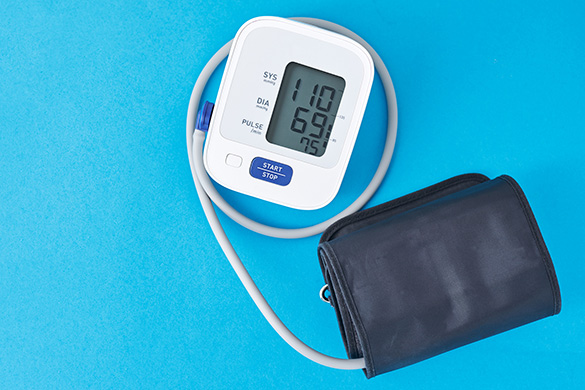It’s called the silent killer for a reason. High blood pressure can go unnoticed for years, all the while that burden on the heart, blood vessels and organs builds up and causes damage.
“There is no clear symptom like a headache. The condition could come without any obvious symptoms,” said Avera Medical Group internal medicine specialist Comfort Agaba, MD, MPH. “Unfortunately, by the time a person starts to feel like something’s wrong, they could be closer to end-stage organ failure. That could be in the form of enlargement of the heart, with subsequent heart failure, damage to the kidneys resulting in a need for dialysis or kidney transplant or even stroke.”
What Normal Means with Blood Pressure
Preventing high blood pressure can only start when you know what normal means. Health care providers measure it as two numbers, the baseline is 120 over 80, often written as
120/80 (Systolic blood pressure/Diastolic blood pressure)
“The guidelines have changed, and now, anyone who has blood pressure that’s higher than 120 over 80 is considered to have elevated blood pressure – which means above normal,” Agaba said.
She added that regular appointments with your provider are the only way to keep an eye on your BP numbers. One measurement is just a snapshot.
“Getting several measurements over a period of time and averaging them is important,” she said. “We often encourage patients to buy a home blood pressure-measuring device. That can help gather a more complete set of information.”
Lowering Your High Blood Pressure
Preventing high blood pressure in the first place is always easier than wrestling with numbers that are already too high. Factors that lead to high blood pressure include:
- Being overweight
- Using tobacco
- Binging alcohol or overusing it
- Eating a diet high in processed foods, sodium and some meats
- Limiting activity
“Family history can increase your chance of having high blood pressure by 30%,” Agaba said. “Age plays a role, too, since the cumulative effect of untreated high blood pressure begins to show up in the way your body works as you get older.”
People ages 50-75 are more likely to have the cumulative effects.
Control What You Can to Control BP
High blood pressure is usually marked by stages, and when found in many adults, they already are at stage 2, with numbers in the 140/90 range or higher.
“Even when we find it at this stage, we can start to address blood pressure with lifestyle changes. Medication will be down the road,” said Agaba. “If we do find it in this stage, we will assess the person’s other risk factors for treatment intensity, but it will always include lifestyle changes. Once medication use starts, it can be a lifelong approach.”
Modifications in diet and exercise can be enough to change blood pressure, especially early in the diagnosis.
“There are now more people getting engaged in their own health,” she added. “There are fewer people who are like an ostrich with their head in the sand, hoping that if they don’t know, everything will go away. The fact that you don’t have symptoms does not mean you have no problem with blood pressure.”
An appointment with your primary care provider is a great first step in the right direction. Remember, no single approach to treating high blood pressure is perfect.
“The treatments we use differ for every individual patient, but the long-term effects are serious,” Agaba said. “If you’re not sure where your numbers stand – take action. Knowledge is powerful.”


